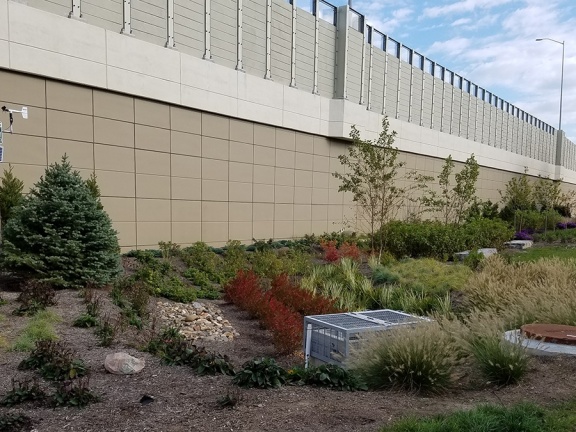
Background
Green stormwater infrastructure (GSI) addresses community greening and cooling, reduces flood risk, and improves water quality through the installation of trees, rain gardens, green roofs, and a variety of basins, wetlands, and other distributed landscape features that capture and manage rainfall and runoff on site. It is a proven stormwater management solution for communities vulnerable to climate-related stresses tied to rising temperatures and severe flood risks. By emphasizing vegetation and natural processes, these highly engineered solutions also create new greenspaces that provide habitat, sustain wildlife, and support natural ecosystems.
Through 2036, the City of Philadelphia is obligated to spend more than $1 billion on additional stormwater infrastructure improvements as part of its responsibilities under the U.S. Clean Water Act. The blueprint for this work is Philadelphia’s Green City Clean Waters plan, which is held up as a national model of urban water management for its incorporation of green infrastructure. Across the Delaware River, the Camden SMART (Stormwater Management and Resource Training) Initiative is investing in a comprehensive network of green infrastructure programs and projects for the City of Camden. These public investments are funded by revenue from residents’ water and sewer bills.
Despite the promise of these plans and regulatory commitments, the “green” aspects of green stormwater infrastructure can still fail to materialize. Challenges with plant care and landscaping, irrigation, and maintenance present significant hurdles. Too often, incorporation of vegetation is eliminated from projects to save money, leaving stormwater management to the invisible performance of below-ground “gray” drainage features like cisterns and underground storage reservoirs. This choice reduces the overall potential benefits of GSI. There is a great opportunity to ensure Philadelphia and Camden’s ambitious stormwater plans and public investments maximize additional community greening and climate resilience benefits while also addressing flood control and water management for communities most in need.
Opportunity Overview
The Foundation seeks to support efforts that will advance stormwater management solutions that feature vegetation, infiltration, and decentralized landscape treatments in recognition of their additional social, environmental, and economic benefits. You can help to advance this objective through capital improvements, policy reforms, regulatory advocacy, education, training, and programming.
We are requesting proposals for one- to three-year projects. After reviewing proposals, WPF will conduct site visits and gather additional information from a limited number of organizations.
Organizations that propose projects in partnership with other applicants will be considered on their individual merits. However, the Foundation recognizes that making significant progress on the objective is difficult and encourages organizations to include partnerships that leverage complementary strengths, resources, and expertise to reach proposed goals.
The Foundation recognizes that there are many different tactics or approaches that could be used to advance the objective stated above. All proposals that meet the criteria described below are encouraged.
WPF has up to $8 million available to advance this objective through this RFP. WPF values diverse approaches from various organizations and communities to address the objective, and we aim to attract and expect to fund a range of projects. There is no minimum amount of funding that projects may request. We are unlikely to award grants over $2 million. We are especially eager to receive applications from small organizations and/or from organizations that are led by and serve individuals who are members of groups with a history of discrimination. WPF expects to award $1 million of the total available under this RFP to organizations with budgets under $500,000 per year.
The grant amount requested should be commensurate with the contribution that the project will make to the overall objective. Projects that demonstrate a diversity of funding sources are likely to be more competitive.
Full Request for Proposals (RFP) and Application
Download the full RFP packet for more information about this opportunity including eligibility, review criteria, learning and insights, budget, and link to an application template.
All applications must be submitted through the Grants Portal.
Webinar
An optional informational webinar took place on June 24: